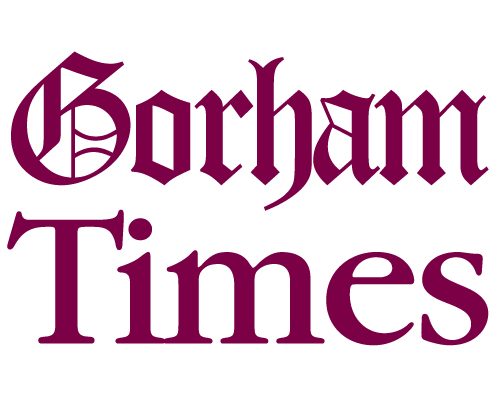Browntail Moths (BTM) were once confined to coastal regions, but Gorham is now on the growing list of areas where they have been spotted. The State is asking for help at this time to spot and destroy, if possible, winter webs in the bare trees. By mid April, the caterpillars will begin to emerge from their winter webs.
BTM caterpillars, harmful to trees and to humans, are recognized by two orange dots on the tail end. Their toxic, barbed hairs can cause a skin rash similar to poison ivy, which can last for a few hours or up to several weeks. The hairs can also cause a more serious respiratory reaction if they are inhaled either by direct contact or from airborne hairs.
The caterpillars are active at two times of the year. From mid-April to late June and then again in August, when the second batch of caterpillars hatch until October, when they build their winter webs to hibernate. The hairs on the adult moths, seen flying around outdoor lights during the summer, are not toxic and do not cause a skin rash, but it is recommended you turn off outside lights to discourage them.
The best time to look is on a sunny day, with the sun at your back. The light is important as it can increase the likelihood of seeing the shining white silk holding the leaves on the trees especially as oaks can retain their leaves all winter. Focus, with the help of a pair of binoculars if possible, on the tips of branches of oaks, birch and other hardwoods as well as apple, and other fruit trees. Look for a white silk tying last year’s leaves to the branches. The size of the winter webs vary from as large as a fist to as small as a few strands tying a single leaf.
Clipping and destroying webs (you do not have to cut off the branch itself) in the fall and winter can help reduce populations. Collected nests can be burned or soaked in soapy water 3-5 days before throwing them away. Wear long sleeves, gloves, protective eyewear and a mask.
For large infestations or those too high to safely reach, pesticide treatments may be necessary and should be done before the end of May. Late treatments will not reduce human exposures to the toxic hairs. If you plan to hire a contractor, be aware that the demand for services is high. Try to line up services early. A list of contractors willing to do browntail work can be found here.
While you are looking for Browntail Moth webs, keep an eye out for signs of another invasive pest, the Emerald Ash Borer (EAB) which has also been found in Gorham. EAB threatens all ash trees, except the mountain-ash, with injury and death within two to three years of infection. They do not harm humans.
According to the Maine Department of Agriculture, Ash trees make up four percent of Maine’s forests, and infestation could have severe economical and ecological effects.
Signs of infestation include S-shaped tunnels under the bark made by the larvae, as well as their D-shaped exit holes. Look for sprouts or offshoots growing abnormally from the base and roots of a tree. Increased woodpecker activity and a “blonding” of the bark as they peck away to reach the larvae and pupae may be evident.
If you see these signs on ash trees, please take a picture and report your findings to the Cooperative Agricultural Pest Survey (CAPS).


